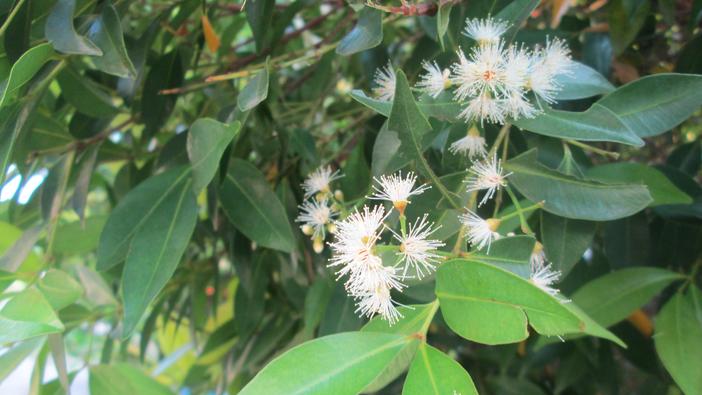Red Lip
(Syzygium myrtifolium)
Red Lip (Syzygium myrtifolium)
/
/

Aris riyanto
CC BY-SA 4.0
Image By:
Aris riyanto
Recorded By:
Copyright:
CC BY-SA 4.0
Copyright Notice:
Photo by: Aris riyanto | License Type: CC BY-SA 4.0 | License URL: https://creativecommons.org/licenses/by-sa/4.0 | Uploader: Ariyanto | Publisher: Wikipedia Commons























Estimated Native Range
Summary
Syzygium myrtifolium, commonly known as Red Lip, is an evergreen tree native to the rainforests and monsoon forests of Southeast Asia. It typically grows to a height of 18-30 feet (5-9 meters) and a width of 9-15 feet (2.7-4.6 meters). The tree has a dense, rounded crown with glossy, elliptical leaves that are aromatic when crushed. Red Lip is notable for its clusters of small, showy red flowers that bloom in the spring, followed by purple or red fruits that are attractive to birds and other wildlife.
Red Lip is valued for its ornamental foliage and flowers, and it is often used in tropical and subtropical landscapes for hedging, screening, and as a specimen tree. It is relatively low maintenance, tolerating a range of soil types, though it prefers well-drained, fertile soils. In cultivation, it requires full sun to partial shade and benefits from medium to high water availability, especially in drier climates. While it is generally pest-resistant, it can be susceptible to root rot in poorly drained soils.CC BY-SA 4.0
Red Lip is valued for its ornamental foliage and flowers, and it is often used in tropical and subtropical landscapes for hedging, screening, and as a specimen tree. It is relatively low maintenance, tolerating a range of soil types, though it prefers well-drained, fertile soils. In cultivation, it requires full sun to partial shade and benefits from medium to high water availability, especially in drier climates. While it is generally pest-resistant, it can be susceptible to root rot in poorly drained soils.CC BY-SA 4.0
Plant Description
- Plant Type: Tree, Shrub
- Height: 18-30 feet
- Width: 9-15 feet
- Growth Rate: Moderate
- Flower Color: Red
- Flowering Season: Spring
- Leaf Retention: Evergreen
Growth Requirements
- Sun: Full Sun
- Water: Medium, High
- Drainage: Medium
Common Uses
Bee Garden, Border Plant, Butterfly Garden, Hedges, Low Maintenance, Street Planting
Natural Habitat
Rainforests and monsoon forests of Southeast Asia
Other Names
Common Names: Wild Cinnamon, Australian Brush Cherry, Kelat Oil
Scientific Names: , Eugenia oleina, Syzygium myrtifolium, Eugenia sinubanensis, Eugenia parva, Syzygium campanulatum, Syzygium oleinum, Syzygium sinubanense, Syzygium campanellum, Syzygium campanulatum var. longistylum,
GBIF Accepted Name: Syzygium myrtifolium Walp.